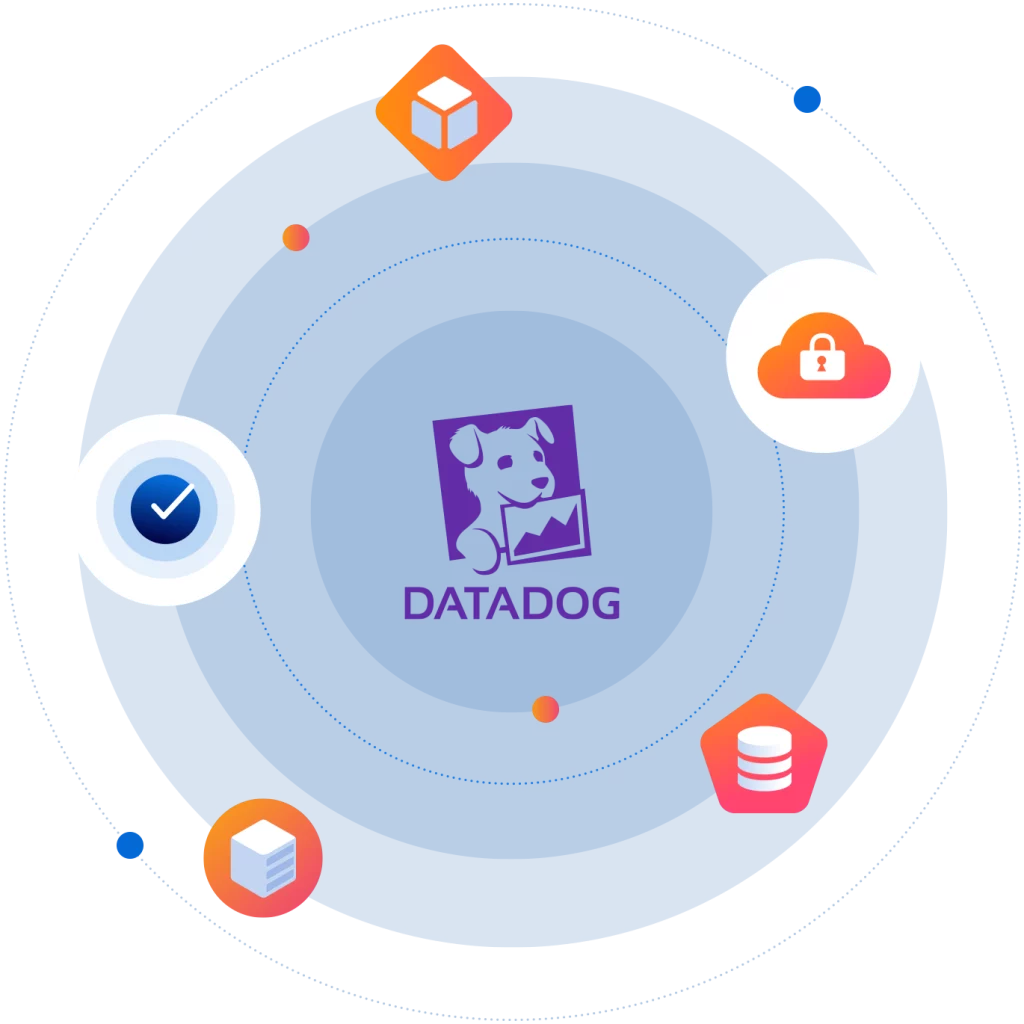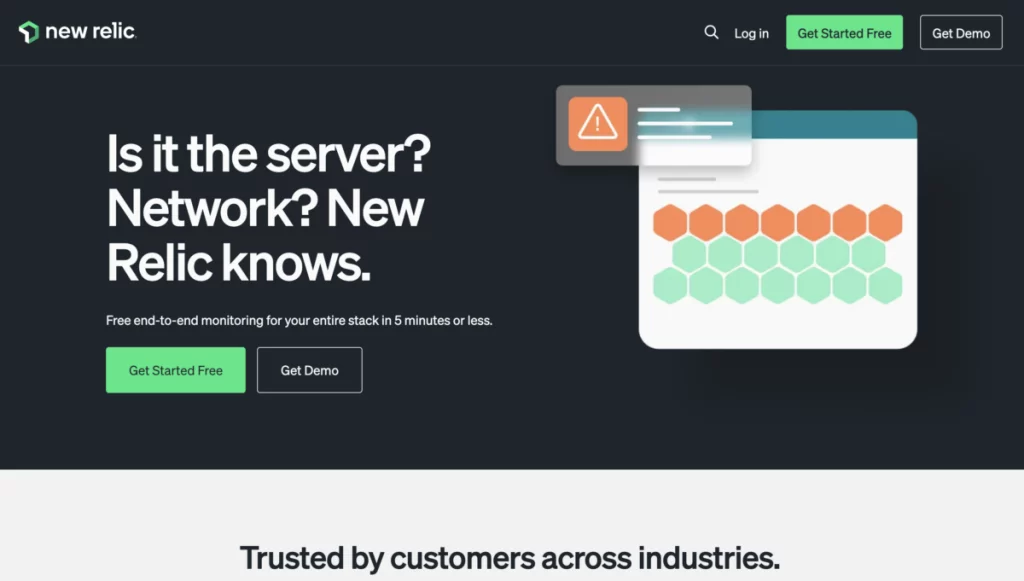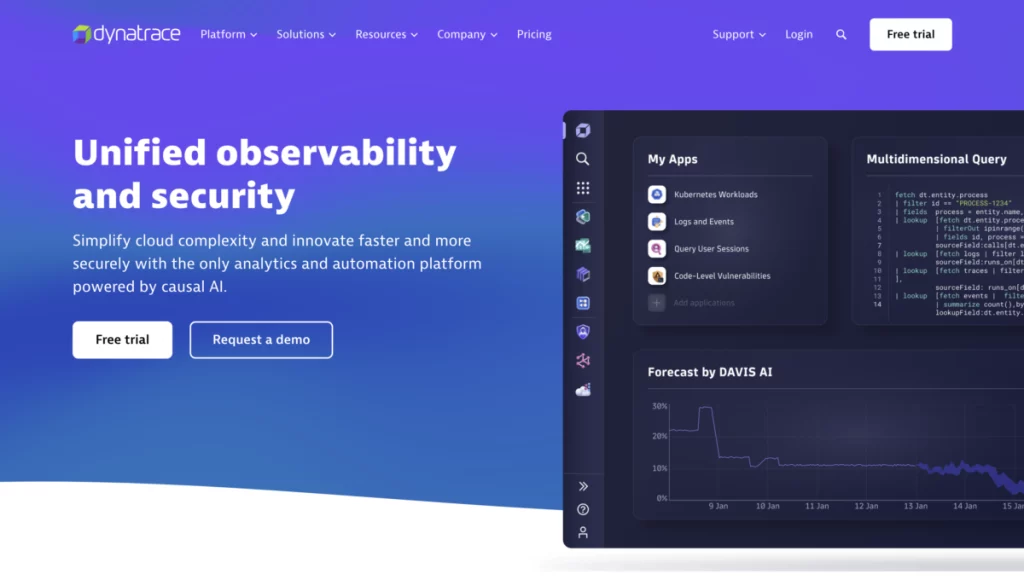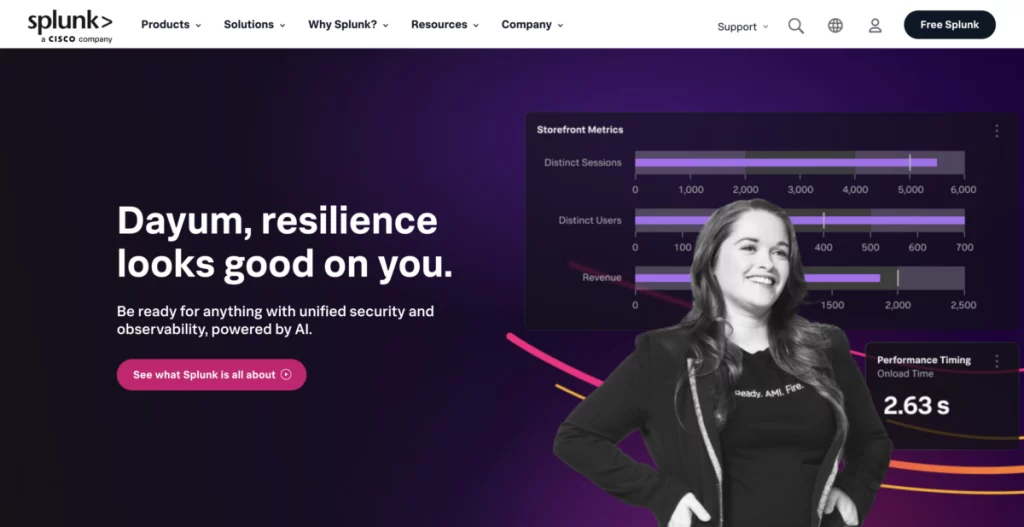Top 10 Observability Tools of 2024
Here are the top 10 observability tools of 2024, based on their features, popularity, and suitability for modern cloud-native environments:
1. Datadog
Datadog is a comprehensive observability platform offering full-stack monitoring for metrics, logs, and traces. It supports over 650 integrations and provides AI-powered anomaly detection, making it ideal for distributed systems.
- Key Features: Real-time monitoring, extensive integrations, AI-driven insights.
- Pros: Unified observability, strong cloud-native support.
- Cons: Expensive for large-scale deployments.

2. New Relic
New Relic provides full-stack observability with application performance monitoring (APM), infrastructure monitoring, and log management. It supports OpenTelemetry and offers a free tier for basic usage.
- Key Features: Code-level visibility, AI-assisted incident detection, extensive integrations.
- Pros: User-friendly setup, strong APM capabilities.
- Cons: Pricing complexity for large deployments.

3. Grafana
Grafana is an open-source tool renowned for its advanced data visualization capabilities. It allows users to create customizable dashboards for metrics, logs, and traces.
- Key Features: Flexible dashboards, wide data source support.
- Pros: Open-source flexibility, strong visualization tools.
- Cons: Limited native alerting; often paired with Prometheus.

4. Dynatrace
Dynatrace is an AI-powered platform offering automatic discovery of application environments and real-time topology mapping. It excels in problem detection and root cause analysis.
- Key Features: AI-driven insights, automatic instrumentation.
- Pros: Comprehensive coverage from infrastructure to user experience.
- Cons: High cost; complex interface.

5. Splunk
Splunk is a robust platform known for its powerful log analysis capabilities. It offers solutions for infrastructure monitoring, APM, and security analytics.
- Key Features: Advanced log analysis, machine learning-based anomaly detection.
- Pros: Scalable; strong search capabilities.
- Cons: Expensive; steep learning curve.

6. Honeycomb
Honeycomb specializes in debugging distributed systems using high-cardinality data exploration and dynamic sampling.
- Key Features: Distributed tracing, advanced querying tools.
- Pros: Excellent for complex systems; developer-friendly.
- Cons: Expensive; may require a shift in practices.
7. Prometheus
Prometheus is an open-source monitoring toolkit designed for time-series data collection and alerting. It is particularly popular in Kubernetes environments.
- Key Features: PromQL query language, pull-based metrics collection.
- Pros: Highly scalable; strong Kubernetes integration.
- Cons: Focused on metrics; requires additional tools for full observability.

8. Elastic Observability (Elastic APM)
Elastic Observability integrates with the Elastic Stack to provide monitoring across logs, metrics, and traces. It is well-suited for organizations already using Elasticsearch.
- Key Features: Log aggregation, distributed tracing.
- Pros: Seamless integration with Elasticsearch; open-source options.
- Cons: Resource-intensive setup.
9. IBM Instana
Instana offers automated full-stack observability with real-time insights into applications and infrastructure. It excels in root cause analysis through AI-driven automation.
- Key Features: Real-time topology mapping, automated instrumentation.
- Pros: Strong automation; real-time analytics.
- Cons: High cost; limited community support compared to open-source tools.
10. SigNoz
SigNoz is an open-source alternative to tools like Datadog and New Relic. Built on OpenTelemetry and ClickHouse, it provides unified observability across logs, metrics, and traces.
- Key Features: OpenTelemetry native support, cost-effective solution.
- Pros: Open-source flexibility; active community support.
- Cons: Limited advanced features compared to enterprise-grade tools.
These tools cater to diverse needs depending on factors like budget constraints, infrastructure complexity, and team expertise. For smaller teams or those seeking cost-effective solutions, open-source options like Grafana or SigNoz are excellent choices. For enterprises requiring advanced features and scalability, platforms like Datadog or Dynatrace are more suitable.